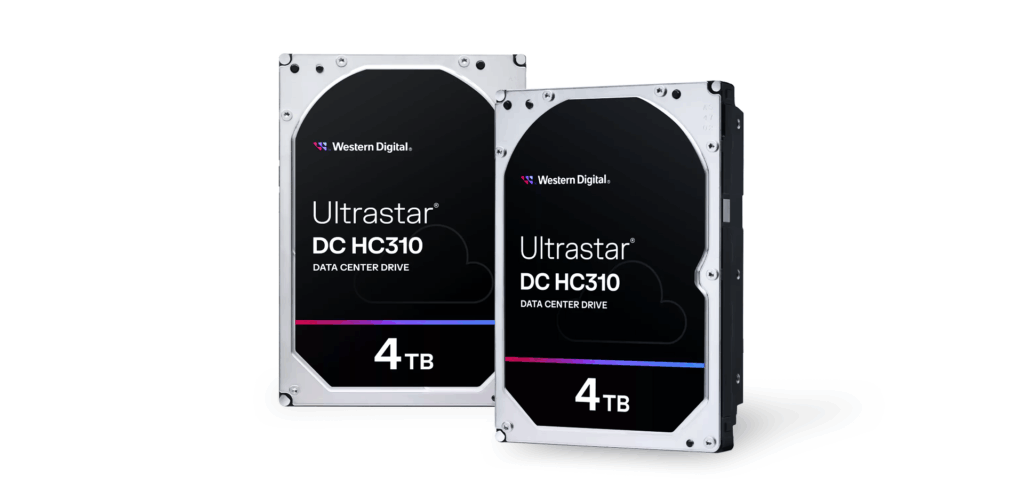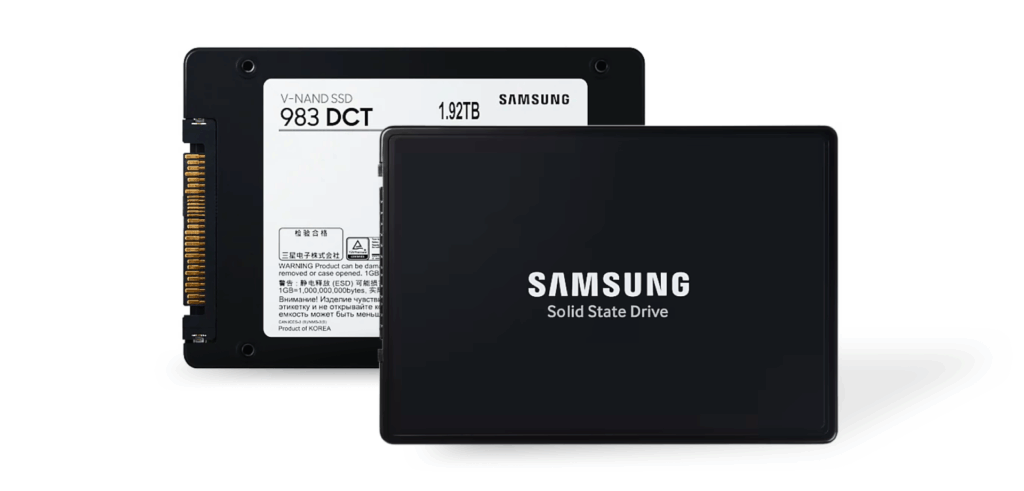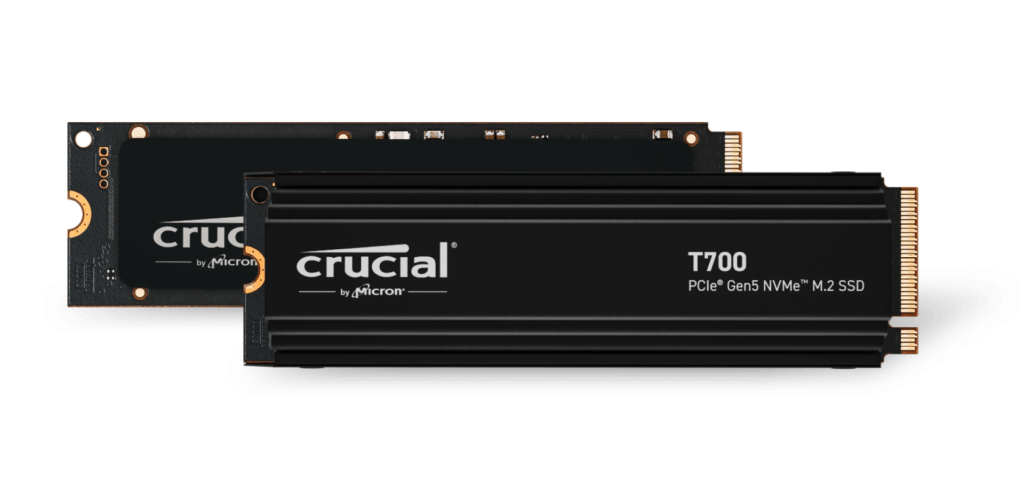- What are HDD, SATA SSD, and NVMe?
- HDD vs SATA vs NVMe on VPS
- Why is NVMe the best choice for VPS?
- When exactly do you need NVMe, and when is SATA SSD or HDD sufficient?
- Let’s summarize
Modern businesses need to process large amounts of data, and old-school HDDs often cannot cope with such loads. And although some users still prefer them, a new generation of storage devices is gaining popularity, offering significantly higher speed and performance.
When choosing server equipment, it is important to understand the difference between the types of storage devices, namely HDD, SSD, and NVMe. The choice often depends on the required data processing speed, available power, reliability, and budget. Our comparative article will help you understand the difference between these types of storage devices and find the best option for your VPS .
What are HDD, SATA SSD, and NVMe?
These are the most common types of disk subsystems in servers. HDD is a mechanical hard disk drive. SSDs come in two main form factors based on their interface:
- SATA SSD connects via a SATA bus, which has limited speed.
- NVMe SSD – works on top of PCIe with the NVMe protocol, providing much higher throughput and IOPS.
The physical structure (mechanical or flash memory) and the interface used directly affect data transfer speed, latency, and overall performance. Let’s take a closer look at each type.
HDD (Hard Disk Drive)

HDD is a traditional hard drive designed for long-term storage of all user information, including the operating system, drivers, programs, and personal files. Inside the HDD are magnetic plates (disks) that rotate around a spindle. They differ in their form factor, namely:
- 3.5″ SATA (5,400-7,200 rpm) – budget solutions, consumer SATA drives with a bandwidth of up to 6 Gb/s.
- 2.5″/3.5″ SAS (10,000-15,000 rpm) – server (enterprise) drives with a SAS interface. These are professional drives with a bandwidth of up to 12 Gb/s.
Data is read and written using moving heads that are positioned above the surface of these plates.
Advantages of HDD
- Very large capacity at a low price;
- Long-term data storage.
Disadvantages of HDD
- High latency and limited IOPS due to physical access to data.
- Due to the presence of moving parts, HDDs are sensitive to mechanical damage and vibration.
- More heat generation and noise.
- It is possible to recover data after a disk crash, but such work will be expensive and not always successful.
SATA SSD (Serial Advanced Technology Attachment)

SSD (Solid State Drive) – a solid-state storage device in which data is stored not on rotating disks, but in NAND flash memory chips.
SATA is a data transfer interface that connects the drive to the motherboard. It was originally designed for HDDs, so the data transfer speed is somewhat limited by the interface’s bandwidth. Despite this, the new generation of drives is significantly faster and more efficient, as it does not depend on the mechanical movement of the device’s parts.
Advantages of SATA SSD
- The absence of moving parts means less risk of mechanical failure and downtime, and increased system reliability without additional vibration or shock protection measures.
- Low access latency (0.05–0.2 ms), which is critical for lightning-fast application and database response times. Users do not have to wait for loading, and requests are processed quickly, even with large volumes.
- High sequential throughput. For you as a customer, this means significant time savings on disk operations (fast transfer of large files, accelerated backups).
- Fast system and application startup means instant reboot and recovery from crashes and minimal downtime for maintenance.
- No degradation due to mechanical wear. In essence, SATA SSD = stable performance over the years (except for high-intensity writes) and significantly fewer unexpected speed drops.
Disadvantages of SSD
- Higher cost. Compared to HDD, the initial investment in the disk subsystem is higher, so renting such servers will be more expensive.
- Possible speed drop when filled more than 80-90%. In the case of classic SSDs, it is necessary to leave a “buffer” of free space or use over-provisioning to avoid slowdowns during peak loads.
- Due to the complexity of data recovery, it is necessary to plan regular backups and RAID configurations.
- Gradual data loss without power. It is advisable not to use SSDs for long-term archival storage without power; it is better to use HDDs or other media for archives.
NVMe SSD (Non-Volatile Memory Express)

NVMe is a modern data exchange protocol for SSDs that operates via the PCIe (PCI Express) bus. Unlike SATA SSDs, NVMe SSDs connect directly to PCIe slots and can reach speeds of up to 14,000 MB/s (PCIe 5.0), low latency of ≈0.02–0.1 ms instead of 0.5–1 ms in SATA SSDs, and the ability to process multiple requests simultaneously (command queues up to ~64,000).
This makes NVMe SSDs an excellent choice for high-load servers and VPS , where fast operation of databases, virtual machines, and large files is important.
Advantages of NVMe SSDs:
Maximum data transfer speed – files are downloaded and copied almost instantly.
Minimal latency – databases and web applications respond instantly.
The server can handle a large number of user requests without any problems.
Direct connection to PCIe reduces the load on the processor, leaving more resources for your applications.
Disadvantages of NVMe SSD:
Slightly higher price compared to SATA SSD.
HDD vs SATA vs NVMe on a VPS
When choosing a VPS with the appropriate storage device, we suggest you familiarize yourself with our comparative table of the characteristics of the most popular solutions:
| Criteria | HDD | SATA SSD | NVMe SSD |
| Memory type | Mechanical disc | Flash memory | Flash memory |
| Interface | SATA | SATA | PCIe |
| Data read and write speed | Up to 160 MB/s | Up to 550 MB/s | Up to 14000 MB/s(PCIe 5.0 х4) |
| IOPS | Up to 100 | Up to 100 000 | Up to 500 000 |
| Response time | ~10 ms | ~0,1 ms | ~0,02 ms |
| Bandwidth | 160 MB/s (limited by mechanics: rotation of platters, heads, etc.) | 600 MB/s | 7300 MB/s |
| What tasks is it suitable for? | Storage of archives, backup copies, large files where access speed is not critical | Website hosting, corporate systems, moderate-sized databases | Processing large amounts of data, resources with a high number of requests, cloud services, virtualization, and other tasks that require high performance |
Why is NVMe the best choice for VPS?
When large amounts of data need to be processed, VPS is often the preferred choice, and NVMe is ideal for such tasks due to its speed, performance, and reliability. Let’s take a closer look at why you should choose an NVMe SSD for your VPS:
High read and write speeds
The read speed of the PCIe 5.0 x4 interface ranges from 10,000 MB/s to 14,000 MB/s, which significantly exceeds the maximum performance of the SATA III interface – 600 MB/s. Sequential write speeds typically range from 9,000 to 12,000 MB/s or even higher, depending on the specific model and NAND memory technology.
It is important to understand that the advertised maximum speeds may differ from the actual speeds, as performance is affected by the SSD controller, NAND type, disk fill level, and overall system configuration. Also important are:
- PCIe 5.0 model type. First-generation models provide up to 10,000 MB/s, while newer solutions can reach 12,000 MB/s-14,000+ MB/s.
- Cooling level. Disks can heat up significantly under heavy load, so effective system cooling is essential to maintain stable performance.
Processing large amounts of data
If you need to store a lot of files on your server, NVMe can minimize processing delays. This makes it the perfect choice for accounting, virtualization, e-commerce, and working with Big Data.
Reduced IOPS delays
This drive can perform up to 500,000 input/output operations per second, ensuring high server performance even under maximum loads.
Better scalability
NVMe supports the modern PCIe interface, which is upgraded with each new version. So if you’re lacking performance, NVMe lets you expand it.
Reliability and durability
With no moving parts, NVMe is resistant to mechanical damage, which increases its service life and minimizes the likelihood of data loss due to disk failure.
When exactly do you need NVMe, and when is SATA SSD or HDD sufficient?
Each storage device has its own performance and data processing speed, so the choice depends on the tasks and purpose of the VPS.
If you work with large amounts of data and it is important for you to minimize delays in processing, choose NVMe. This storage device offers extensive scalability, so you won’t have to buy additional hardware at unexpected moments. NVMe SSD is the ideal solution for:
Production databases on PostgreSQL. IOPS delays are reduced and throughput is increased, which is critical when processing large numbers of simultaneous requests.
Docker and virtualization. Fast data read and write speeds allow you to run and scale dozens of containers or virtual machines.
Large-scale eCommerce projects. Faster page loading, instant request processing, and consistent performance even during peak loads.
Big Data analytics. Processing large amounts of information with ultra-fast access and high performance for effective analytics and computing.
AI and machine learning. Increased speed of indexing, parsing, model loading, and temporary calculations.
If your project requires average performance at an optimal price, a SATA SSD is an excellent choice. SATA SSDs are ideal for the following projects:
- Small and medium-sized websites. Stable loading of pages that do not have peak loads, such as blogs, corporate websites, etc.
- Databases. Optimal balance of speed and performance in routine data processing.
- Development and testing. Initial stages of project development and testing with average load at an affordable price.
The good old HDD is still a popular choice for low-performance tasks, offering a cost-effective solution. Its capabilities are sufficient for:
- Archiving and backup. Access to large amounts of memory with long-term file storage at a low price.
- Small business needs. Storage of documents, databases, and backups without significant financial costs.
- Low-traffic websites. Processing requests from websites that do not have load spikes and do not require high resource performance.
Let’s summarize
The choice of storage for a VPS depends on its purpose. If your project requires average performance, choose a SATA SSD. For large-scale tasks that require stability and high read and write speeds, we recommend an NVMe SSD.
At HostPro, we have implemented NVMe drives on all VPS plans to ensure fast data processing and minimal latency for our customers. If you are unsure about choosing the best VPS plan please contact our corporate sales department at [email protected] We will help you choose the option with the best price-performance ratio for stable and efficient operation of your server.